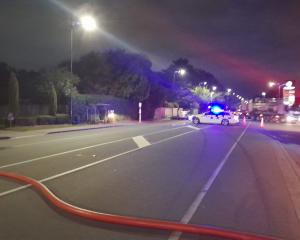Police say they acknowledge the finding and said while there were "other options" available to the officer, if the offender had listened to instructions he never would have been tasered.
"Ultimately, if this offender had listened to the police officer rather than attempting to run off and resist arrest, then this would have been resolved in a much simpler manner," Waitemata Police District Commander Superintendent Tusha Penny said.
The arrest took place after the officer saw a man on a motorbike ride past him at high speed on March 4 last year.
The man - wanted on outstanding warrants for failing to appear in court - was forbidden from driving and in possession of methamphetamine.
He was soon found hiding behind a fence on a nearby property.
The officer drew his Taser and pointed it at the man, shining its laser sights on him as a warning, a technique known as "laser painting".
The man initially obeyed instructions, but when the officer radioed for backup, the man ran away.
The officer chased him down the street, and warned the man again to stop, and that he had a Taser.
The man kept running.
The officer later told the IPCA that he was concerned that the man might take the police car which was parked close by.
He tasered the man in the back, causing him to fall face-forward on to the driveway.
The man suffered facial injuries, and was knocked unconscious.
The officer again called for backup, and an ambulance.
Another officer arrived shortly afterwards, and they helped to put the injured man into the recovery position while they awaited the ambulance.
In a report released today the IPCA found that the officer was justified in arresting the man for his dangerous driving and in exercise of outstanding warrants for his arrest.
However, he was not justified in laser painting or discharging his Taser at the man.
Police policy requires that when an officer uses a Taser on someone, the person must be "assaultive" - meaning they are "showing an intent to cause harm, expressed verbally or through body language or physical action".
"Although Officer A felt vulnerable, Mr X's behaviour was not assaultive, and Mr X was not presenting an immediate threat. Officer A had other options available to him," IPCA chairman Judge Colin Doherty said.
The IPCA also found that the officer should have provided medical assistance immediately after the man was tasered.











